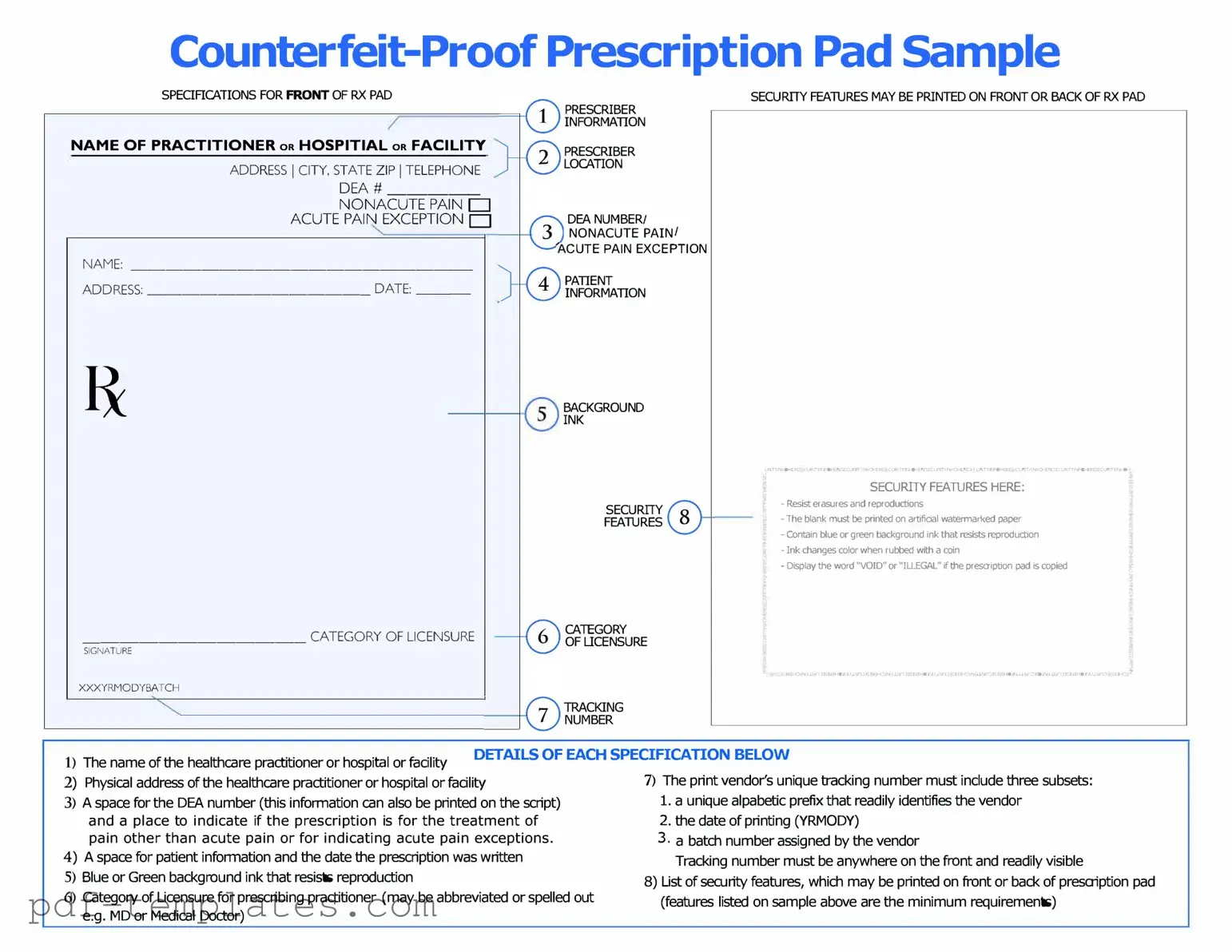The Prescription Pad form plays a crucial role in the healthcare system, serving as a primary tool for healthcare providers to communicate medication needs to pharmacies. This form typically includes essential information such as the patient's name, date of birth, and contact details, ensuring that the prescription is accurately linked to the right individual. Additionally, the prescribing physician's information is prominently displayed, which includes their name, contact number, and professional credentials. The medication details are clearly outlined, specifying the drug name, dosage, quantity, and instructions for use. This level of detail is vital for both the patient’s safety and the pharmacist’s understanding of how to dispense the medication correctly. Furthermore, the form may include sections for refills and any special instructions, allowing for a seamless experience when patients need to obtain their prescriptions. By standardizing the process of prescribing medications, the Prescription Pad form helps to reduce errors, improve patient care, and enhance communication among healthcare professionals.
